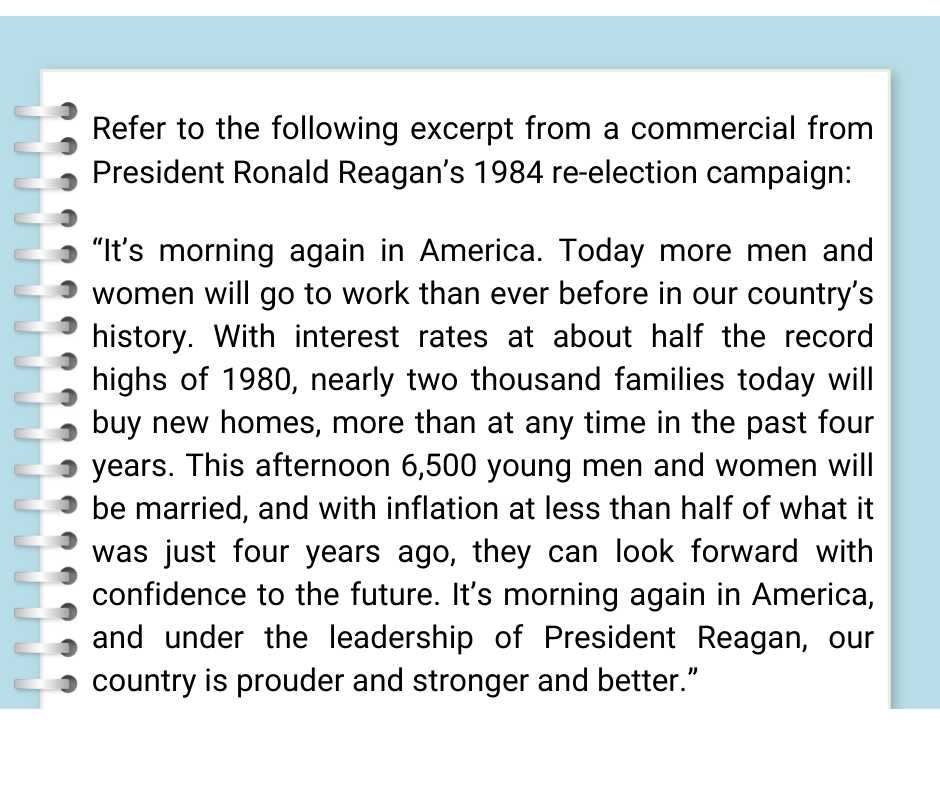
Explanation:
The "Reagan Doctrine" was a significant departure from the prior containment strategy. Reagan wanted to "roll back" Soviet victories rather than stop it from spreading. He supplied weapons to Afghan insurgents, increased US nuclear capability, invaded Grenada, and supported anti-Communist forces in Nicaragua.
Explanation:
The USSR came under financial pressure to raise defense spending as a result of President Reagan's confrontational stance toward the USSR. Mikhail Gorbachev, the head of the Soviet Union, also started political and economic changes within the USSR that promoted greater transparency and freedom of speech. Finally, the Soviet economic system was incredibly ineffective, which fueled internal dissent and dissatisfaction. All of these tensions converged to collapse the USSR.
Explanation:
The dispute over the proper place of the US in international affairs following the conclusion of the Cold War is encapsulated in President Clinton's address. The US took engaged in numerous peacekeeping operations in Haiti, Bosnia, and Somalia despite public resistance.
Explanation:
The debate over planned revisions to immigration control laws and procedures was sparked by increased immigration. Those who oppose immigration have also expressed concern about economic competition from immigrants and dangers to the national identity of the United States.
Explanation:
The USA Patriot Act strengthened the federal government's surveillance and security powers. The bill, according to many critics, surrendered fundamental American liberties.
Explanation:
Supply-side economics, also referred to as "Reaganomics," lowers taxes for the wealthy to encourage business investment and increase jobs. Reagan also battled the unionization of air traffic controllers and liberalized the banking and gas sectors.
Explanation:
The most important factors supporting Osama Bin Laden's Al Qaeda network were American political and military power in the Middle East. The US supported Israel and kept troops stationed in Saudi Arabia.